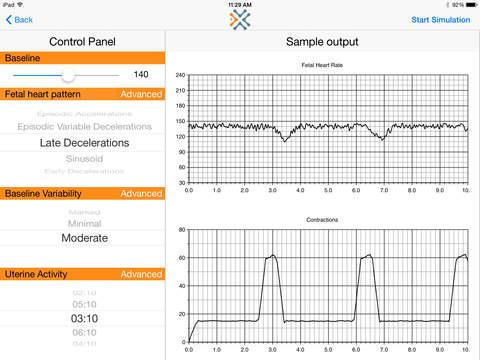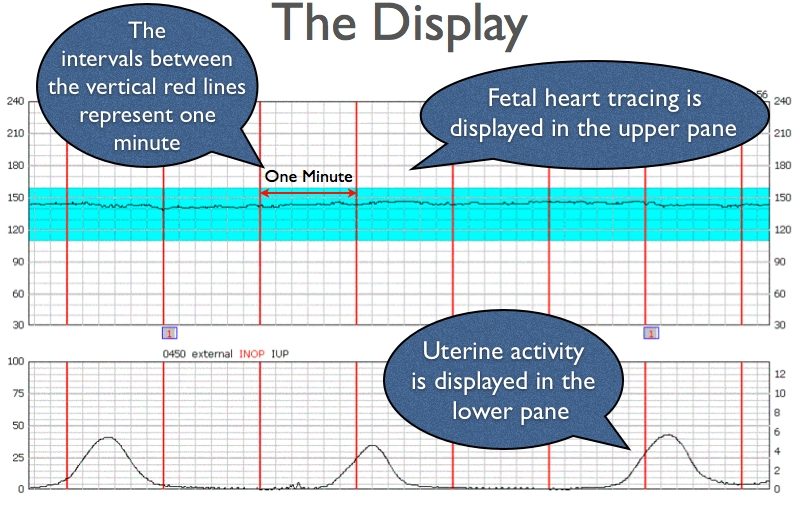
Electronic Fetal Heart Monitoring. They do this by attaching either externally and non invasively or internally to detect the fetal heart and each uterine contraction. The electronic fetal heart rate monitoring program introduces a comprehensive systematic evidence based approach to standardized intrapartum fetal heart rate interpretation and management that reflects consensus in the medical literature is practical and teachable. If your pregnancy is going normally the doctor likely will check your baby s heart rate from time to time with a special stethoscope or a hand held device. The introduction of electronic fetal monitoring into the practice of obstetrics has profoundly altered the face of the specialty.

Electronic fetal heart monitoring electronic fetal monitors continuously record the instantaneous fetal heart rate on the upper channel and uterine contractions on the lower channel. Nearly 40 years later electronic fetal monitoring commands a near universal presence in labor and delivery suites in the united states but debate continues as to whether its use has been a positive or negative factor in modern medical practice. The introduction of electronic fetal monitoring into the practice of obstetrics has profoundly altered the face of the specialty. Many factors interact to regulate the fhr including cardiac pacemakers the cardiac conduction system autonomic innervation humoral factors extrinsic factors and local factors. Electronic fetal heart rate fhr monitoring was introduced into clinical practice during an era in which intrapartum fetal hypoxia was thought to be the primary cause of cerebral palsy. They do this by attaching either externally and non invasively or internally to detect the fetal heart and each uterine contraction.
Electronic fetal heart monitoring electronic fetal monitors continuously record the instantaneous fetal heart rate on the upper channel and uterine contractions on the lower channel.
Nearly 40 years later electronic fetal monitoring commands a near universal presence in labor and delivery suites in the united states but debate continues as to whether its use has been a positive or negative factor in modern medical practice. Electronic fetal heart monitoring electronic fetal monitors continuously record the instantaneous fetal heart rate on the upper channel and uterine contractions on the lower channel. Electronic fetal heart rate fhr monitoring was introduced into clinical practice during an era in which intrapartum fetal hypoxia was thought to be the primary cause of cerebral palsy. Many factors interact to regulate the fhr including cardiac pacemakers the cardiac conduction system autonomic innervation humoral factors extrinsic factors and local factors. They do this by attaching either externally and non invasively or internally to detect the fetal heart and each uterine contraction. Nearly 40 years later electronic fetal monitoring commands a near universal presence in labor and delivery suites in the united states but debate continues as to whether its use has been a positive or negative factor in modern medical practice.